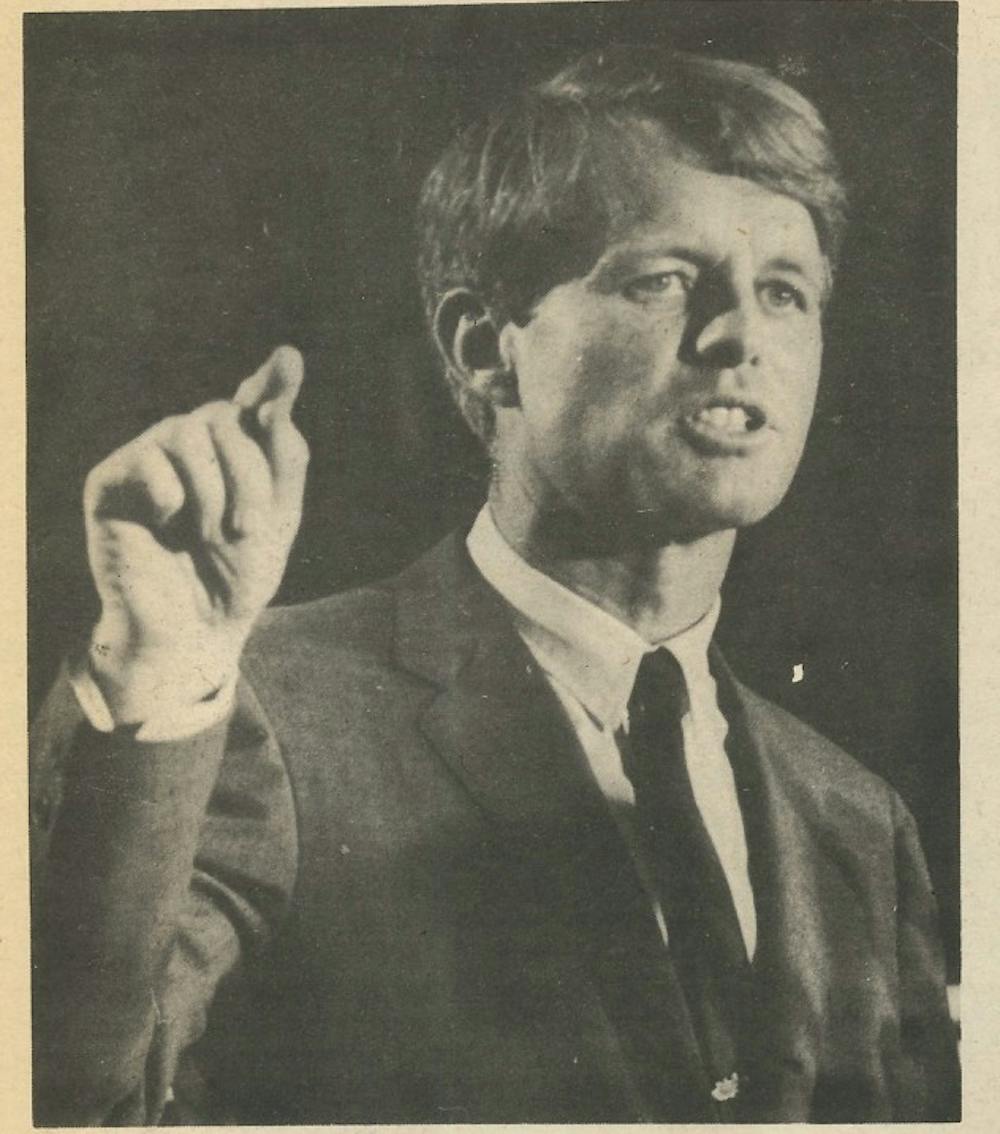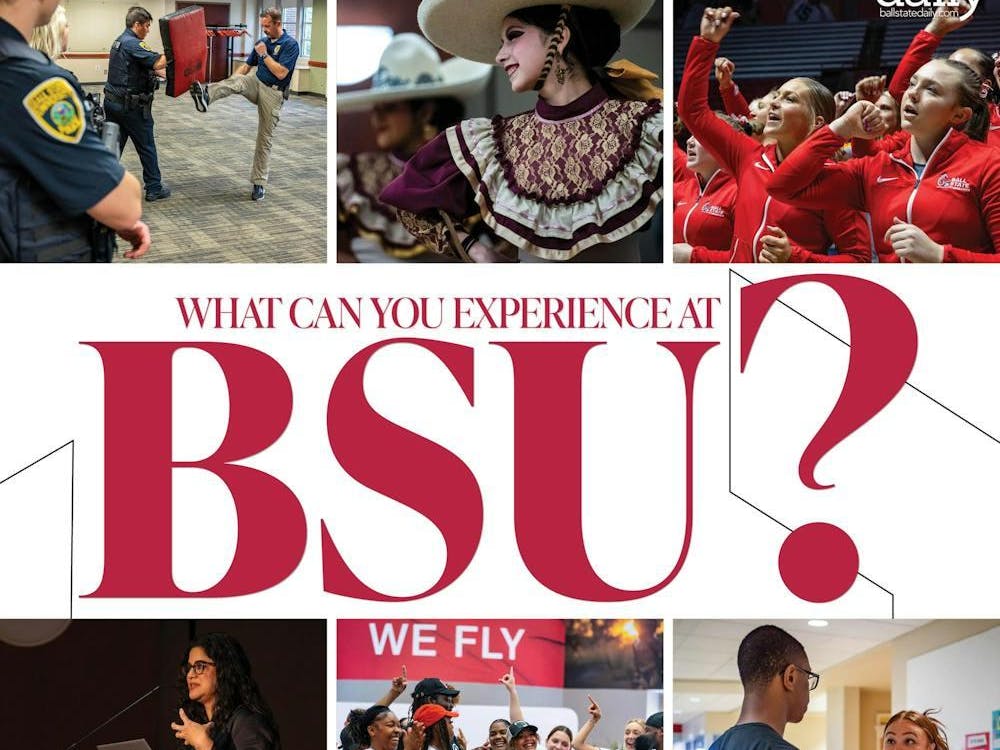Hours before the assassination of Martin Luther King, Jr., a campaign rally by Robert F. Kennedy took place at Ball State on April 4, 1968.
Kennedy, the democratic presidential candidate at the time, spoke to students and Muncie community members in Irving Gymnasium, formerly known as Men’s Gym. His 20-minute speech focused on topics including domestic issues and international problems relating to the Vietnam War.
“Kennedy was one of the most well-known political figures at that time," said history professor Bruce Geelhoed.
“This was such an important moment in history because we had a presidential candidate on campus. That doesn’t happen every presidential campaign. Other than Obama, who came in 2008, the only other presidential candidate to come to Muncie was Eugene McCarthy."
After his speech, Kennedy departed by plane from the Muncie airport for a planned campaign stop in Indianapolis. As his plane was landing, he was informed that King was assassinated in Memphis, Tennessee.
Kennedy shared the news of King's death shortly after 9 p.m. in a park at 17th and Broadway streets on the northside of Indianapolis. Many in the crowd had not heard about the assassination.
What was originally planned to be a campaign speech turned into an impromptu address acknowledging anger and sadness with a call for peace.
“We can move in that direction as a country, in greater polarization — black people amongst blacks, and white amongst whites, filled with hatred toward one another,” Kennedy said from the flatbed of a truck. “Or we can make an effort, as Martin Luther King did, to understand, and to comprehend, and replace that violence, that stain of bloodshed that has spread across our land, with an effort to understand, compassion, and love.”
Geelhoed, who was a college sophomore at the time, said Kennedy was revolutionary in the way he spoke to the nation.
“He took a lot of tension out of the environment,” Geelhoed said. “Kennedy was creating a voice of reason in a time of chaos. He appealed to people’s reasoning at a time when nothing was reasonable, which was a bold step forward.”
King was a noted civil rights leader, an advocate for social justice and a Nobel Peace Prize winner. He was killed after traveling to Memphis to support a workers strike and lead a peaceful march.
King was only 25 when he helped organize the Montgomery Bus Boycott, and soon after, he organized African Americans across the country in support of voting rights, desegregation and other basic civil rights. He also advocated for the poor and spoke out against racial and economic injustices. In doing so, King maintained nonviolent and peaceful tactics — even when there were threats to his life.
From April 1968 onward, The Daily News covered the events leading up to and including Kennedy's visit to Muncie and what happened in the aftermath of King's death.

This issue of The Ball State News printed April 2, 1968 and previewed Robert F. Kennedy's visit to Muncie. Despite the senator's busy schedule while traveling around Indiana for several days before the state's primary election, local party officials lobbied for his visit.
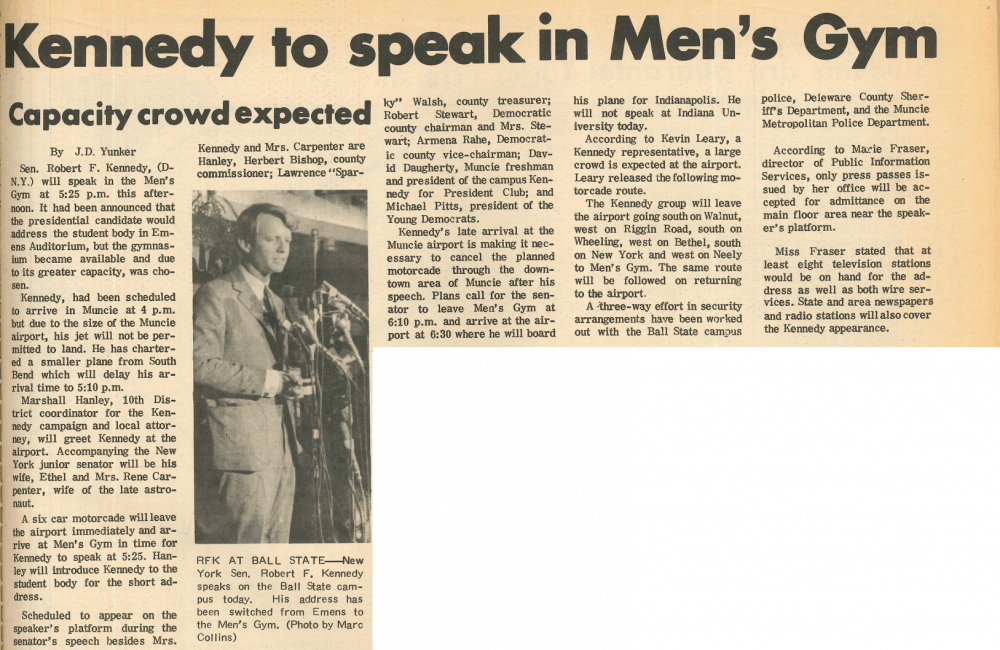
The day of Kennedy's arrival in Muncie, the senator was expected to address students and the community at 4 p.m. in the Men's Gym. Although Kennedy was originally expected to speak in Emens Auditorium, large crowd numbers moved the event to the gym. This article published in the April 4, 1968 edition of The Ball State News.
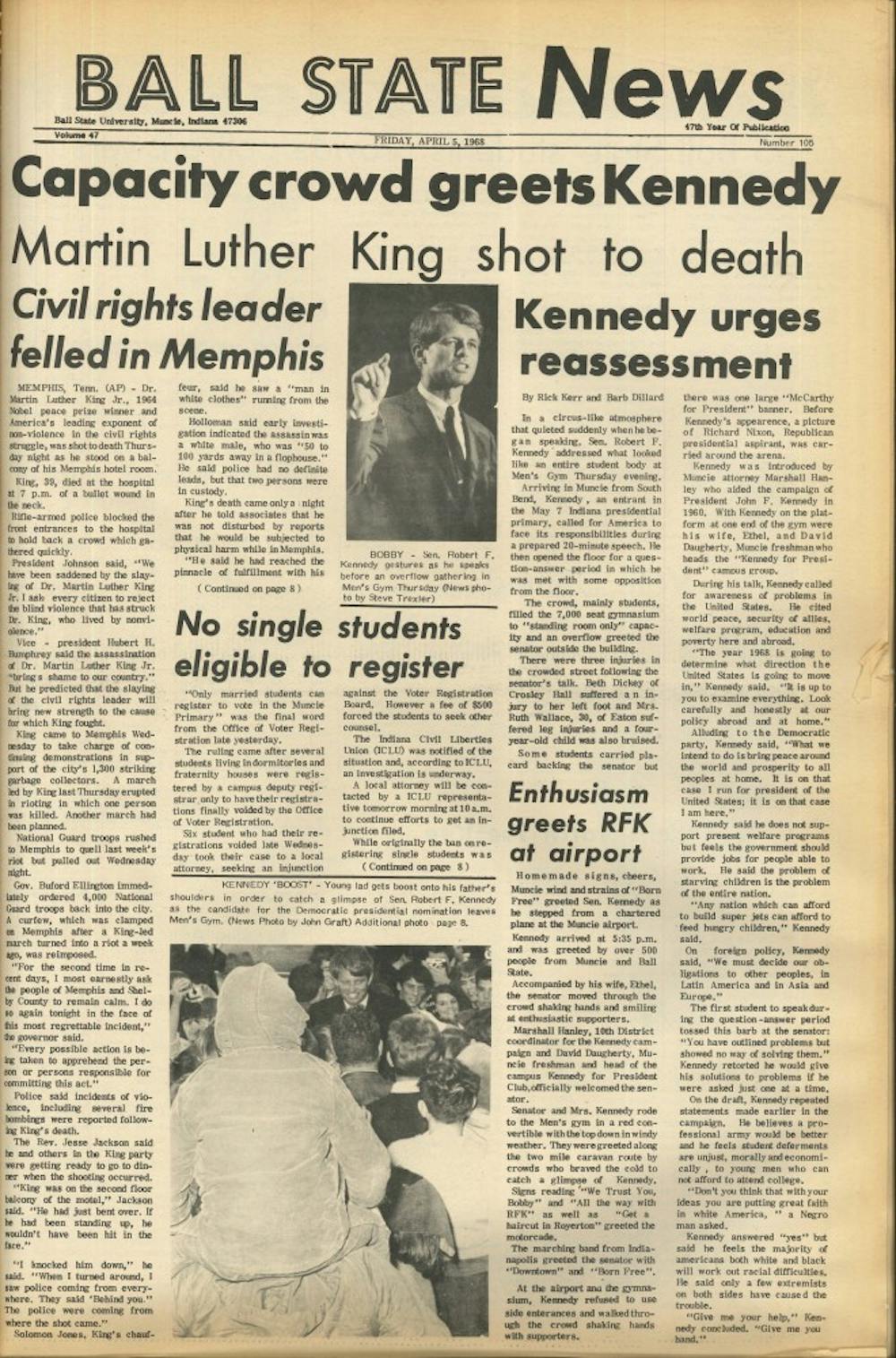
Kennedy gave a 20-minute speech to an "overflowing" crowd — consisting mainly of students — in the Men's Gym at Ball State. While on his way to Indianapolis for another speaking engagement, Kennedy received word about the assassination of Martin Luther King Jr. On April 5, 1968 — the day following King's death — this was the front page of The Ball State News.

A young boy, pictured here, sat atop his father's shoulders to get a glimpse of Kennedy as the presidential aspirant moved among the crowd at Ball State on April 4, 1968. Kennedy refused to use side entrances at the airport or at Ball State's gymnasium, instead preferring to mingle with the crowds. This photo was published in the May 9, 1968 edition of The Ball State News.
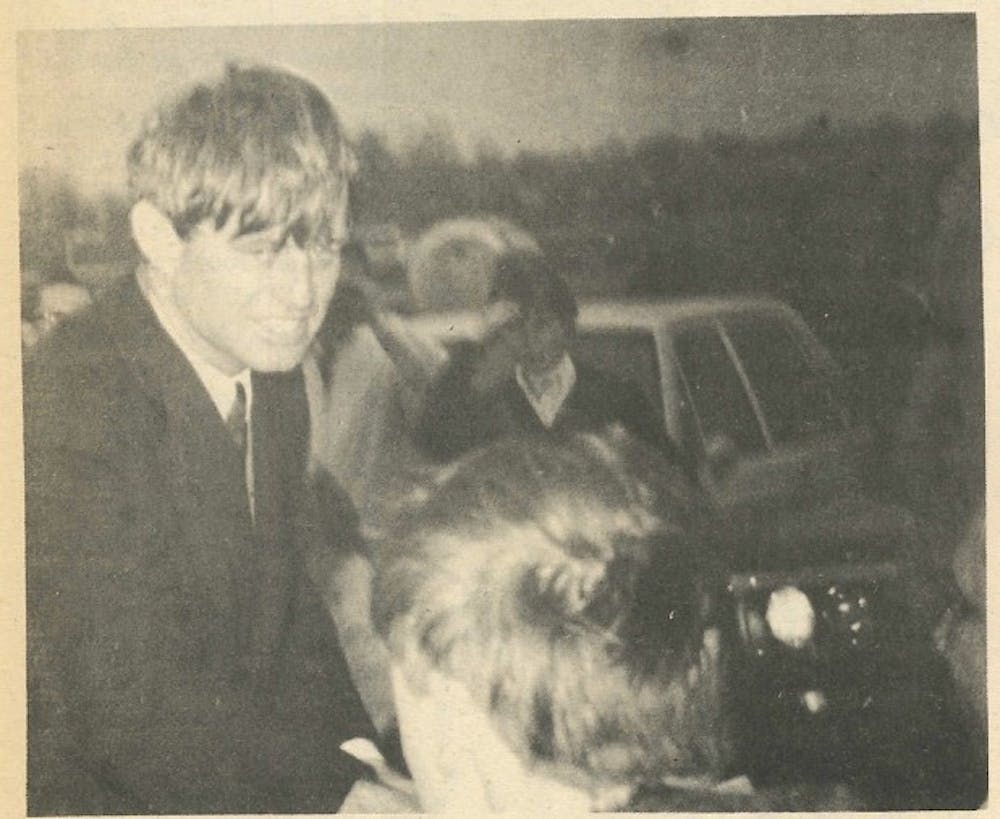
Kennedy, seen here, shook hands with supporters shortly after he landed at the Muncie airport April 4, 1968. Kennedy left Muncie by plane for Indianapolis shortly after speaking at Ball State. This photo, taken by John Graft, was published in the April 5, 1968 edition of The Ball State News.
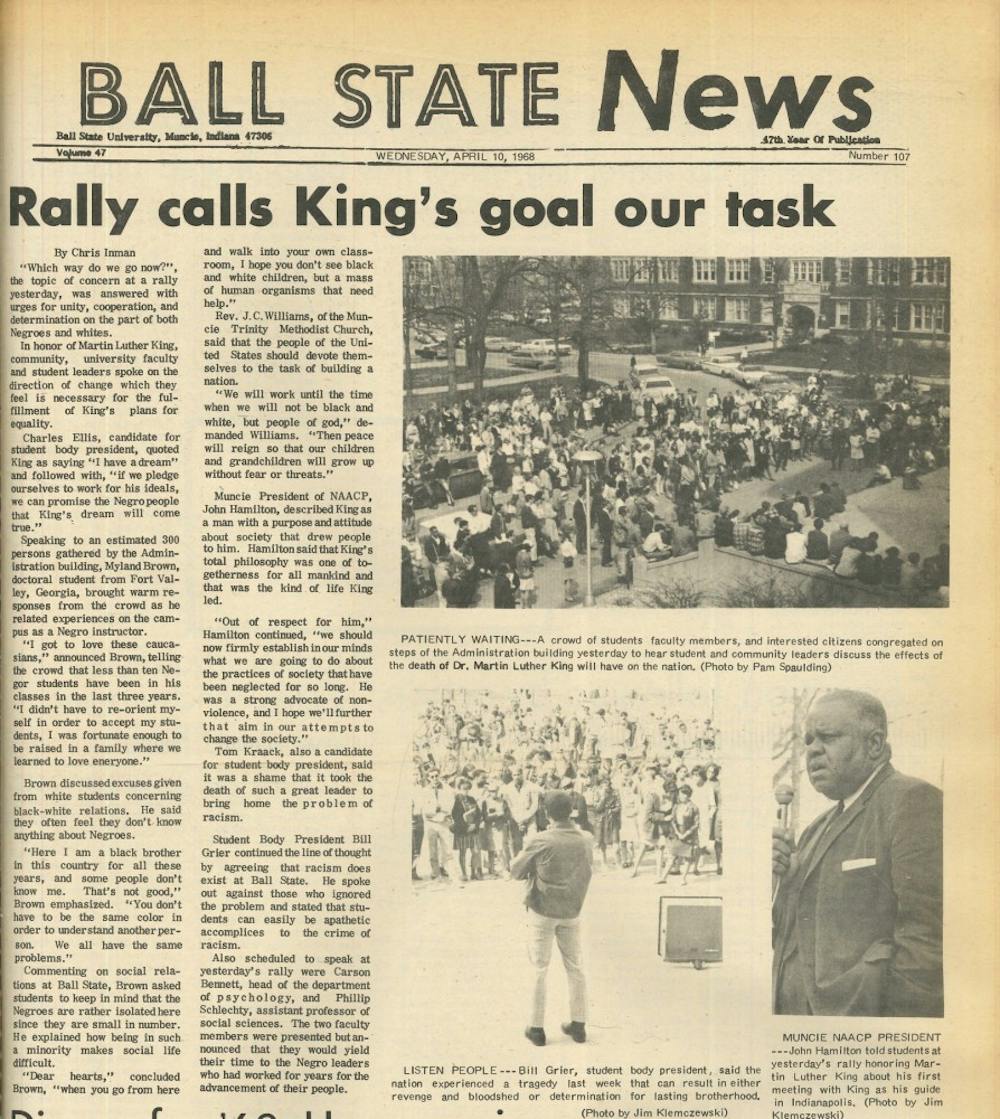
On April 9, 1968, a group of students, faculty and community members gathered outside Ball State's Frank A. Bracken Administration Building to reflect on the death of King, which occurred just days before. Coverage of this event was featured on the front page of The Ball State News April 10, 1968.
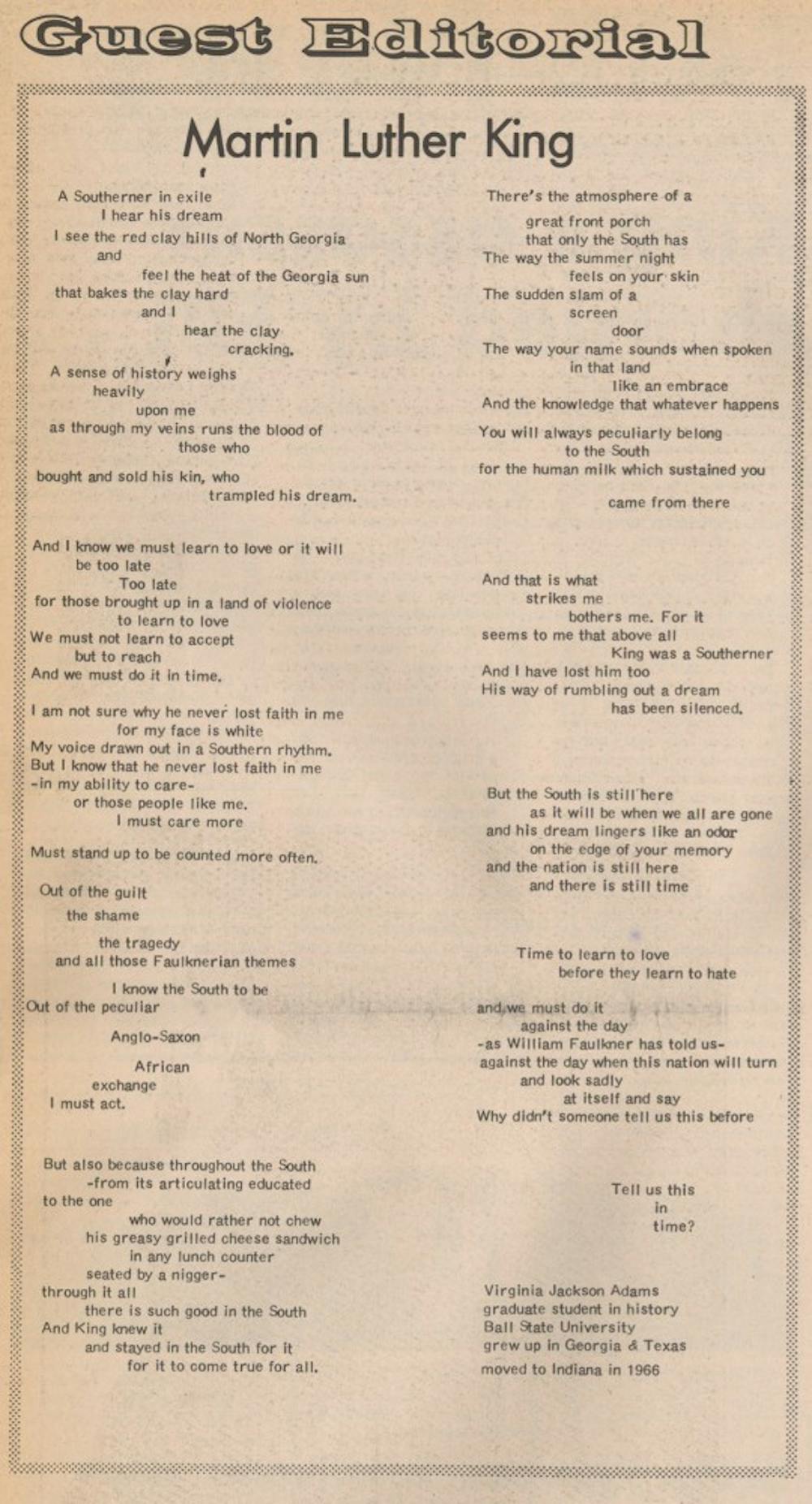
This guest editorial — written by Virginia Jackson Adams, a graduate student in history — was submitted to The Ball State News in the wake of King's death and published on April 18, 1968.
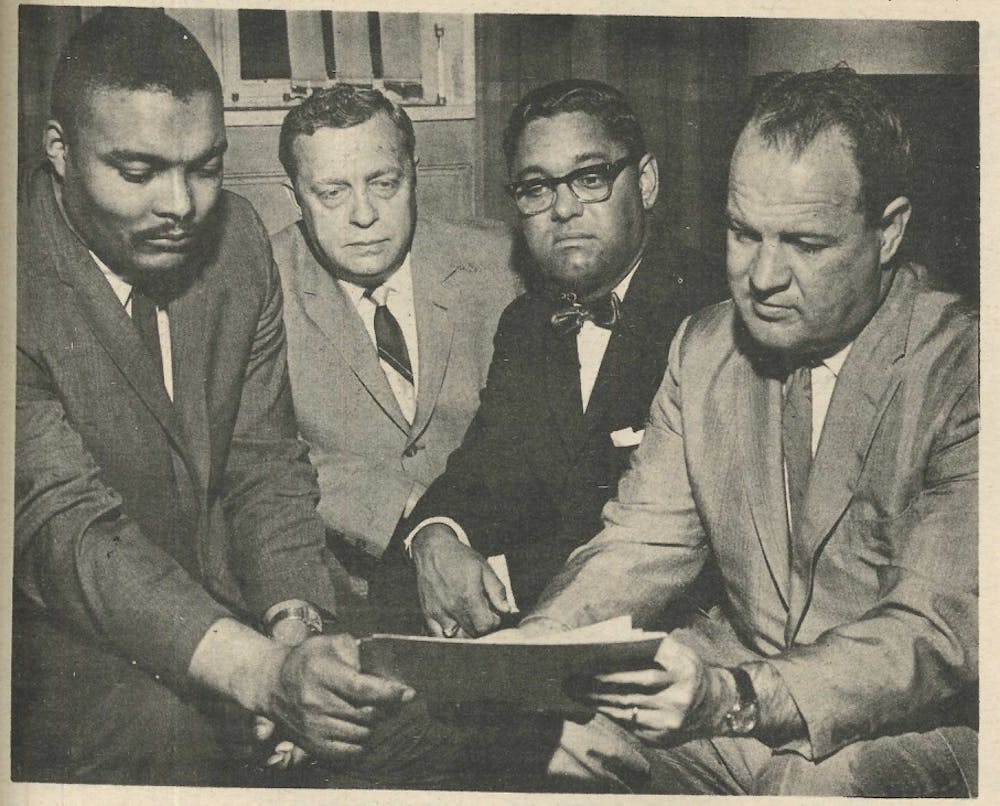
Following King's assassination, Ball State established three scholarships in his memory for incoming African American students. Two of the three members of the committee that worked out the details for the scholarship program are shown here; Weldell Logan (left) and Joseph Rocha (second from right). Working with them were Merrill C. Beyerl, then-vice president for student affairs (second from left), and Robert Linson, then-alumni director (right). Scholarships were made available in fall 1968. This photo was published in the May 14, 1968 edition of The Ball State News.
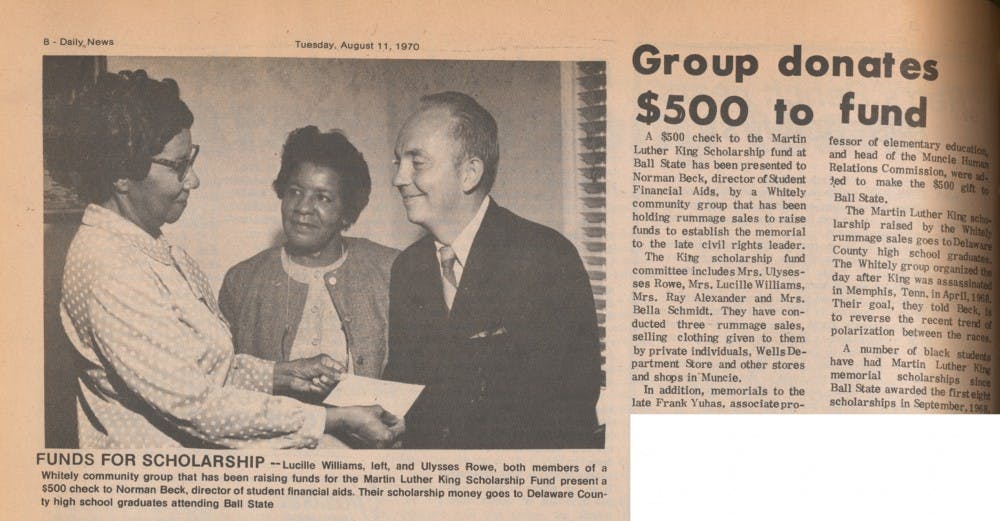
A $500 check on behalf of a Whitely community group was presented to Ball State's Norman Beck, then-director of student financial aids. The scholarship money went toward Delaware County high school graduates attending the university. Two years after King's assassination, eight scholarships were awarded in his memory. This story published in the Aug. 11, 1970 edition of The Ball State Daily News.
All archived copies of The Daily News can be found in Ball State's Digital Media Repository.
Contact Allie Kirkman with comments at aekirkman@bsu.edu or on Twitter @alliekirkman15. Contact Casey Smith with comments at casmith11@bsu.edu or on Twitter @SmithCaseyA.

